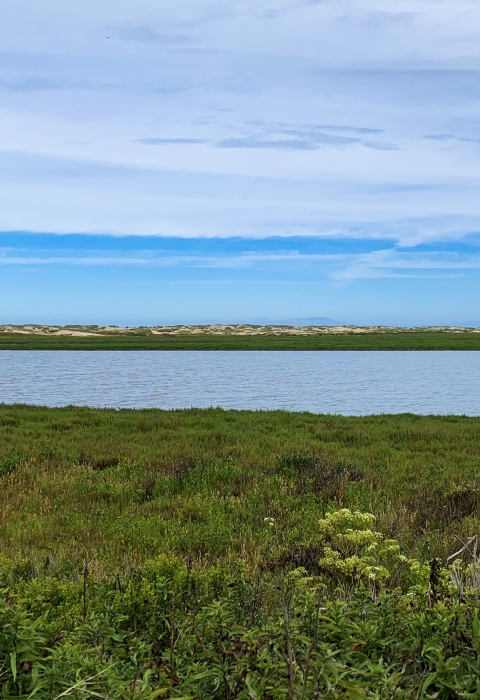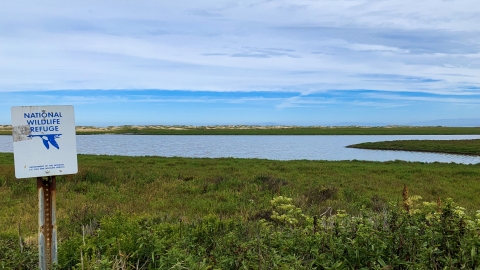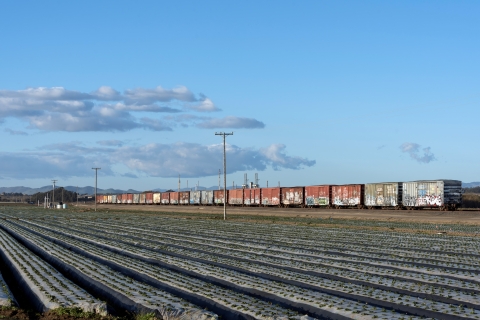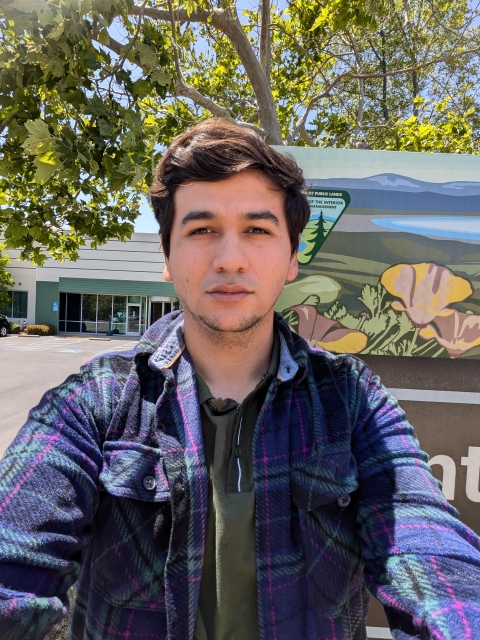Para la versión en español, use el enlace aquí.
National Hispanic Heritage Month (September 15 to October 15) honors the history and contributions of Latinos tracing their roots to Spain, Mexico, Central America, South America and the Spanish-speaking nations of the Caribbean. Alongside Latino Conservation Week in September, Hispanic Heritage Month serves as a powerful reminder to all of us that, by embracing others and ourselves, we can have a brighter future through the inclusion of diverse cultures, backgrounds and perspectives.
The history and present of the Salinas River National Wildlife Refuge in California depict the Latino heritage in the region. Like many other places throughout the United States, the Salinas Valley is integral to the individual and collective experiences of the Latino diaspora. After operating as a coastal defense base by the U.S. Navy, the Salinas River National Wildlife Refuge was established on July 10, 1973 for its prime location along the Pacific Flyway.
Historical records depict the Salinas Valley as an area rich with shallow lakes, sloughs, marsh vegetation, riparian riparian
Definition of riparian habitat or riparian areas.
Learn more about riparian zones and grasslands. The Salinas River region, part of a larger wetland ecosystem that included Elkhorn Slough and Pajaro River, was once home to tule elk and the California grizzly bear.
A People’s History
Although not the only means of connection to the land, regional history illustrates the interrelationships between agriculture and the Latino diaspora. During Spanish colonization, agriculture was limited to mission lands where irrigation was constructed. The Ohlone indigenous peoples provided the bulk of the labor for the agricultural lands during this time.
In the early 1800’s, Mexican ranchers and farmers were attracted to the land near the Salinas River due to its fertile soil (2,200 acres became known as Rancho Rincón de Salinas). During that period, Monterey served as the capital of Alta, California, which included all of present-day California and the American Southwest, making the town a critical location towards establishing the new California state government. The American Acquisition came with many changes and, in the following decades, Monterey County thrived from commercial fishing, whaling and its growing agricultural economy.
Today, sand dunes surround the west side of the refuge, while adjacent land is primarily used for agribusiness. Local cultivators grow a variety of crops including artichokes, strawberries, raspberries, lettuce, grapes and more. The neighboring town of Castroville, located about 2.5 miles away, is home to many Latino families and known as the “Artichoke Center of the World.” Today, the agricultural production in the County of Monterey is an essential portion of its economy,; contributing over $4 billion per year to the county’s economic output according to the Monterey County Farm Bureau.
An Agricultural Legacy
The Salinas Valley was the epicenter for the development of civil rights for Latino and Filipino farm workers. Cesar Chavez and Dolores Huerta, American Latino civil rights activists, were pivotal in raising awareness of the unsafe working conditions and harmful effects of pesticides on farm workers. Similar to Rachel Carson, author of Silent Spring, Chavez and Huerta saw firsthand how pesticides were harmful. In her research, Carson focused on wildlife and other environmental factors, while years later Chavez and Huerta championed against the pesticides for their effects on people. Around the same time that the refuge was established, peaceful boycotts and hunger strikes inspired by Chavez and Huerta took place in the Salinas Valley and other Californian regions.
Alfonso Gutierrez and Thalia Espinoza reflect on their experience working in the agricultural fields today.
“Times have changed and working conditions have improved, but working in these fields still involves risk,” said local Salinas Valley agricultural worker Alfonso. “Rain, heat waves, pandemic and fires make the job undesirable; this being the only job I can get, I’ll take it out of necessity. We take the precautions necessary to stay safe, but the job is heavy and occasionally you’ll see or hear about individuals who have been hurt or developed a medical condition from working in the fields. Despite all of the surrounding risks, I’m thankful that I can work in this country, for I’m making well above what I would be making in Mexico.”
Thalia grew up in Salinas, California and worked seasonally at nearby produce packaging coolers and agricultural fields to help pay for college. “The coolers had a constant smell of chlorine, and I’d often experience pain in my joints from the cold and uneven ground,” she expressed. “At the fields, there was the occasional smell of pesticides and ever-changing weather. For the most part, I only worked summers. It is hard to imagine some individuals have been doing the same job for decades. Overall, working in agriculture was a good experience, the people there are humble and treated you like family; seeing the sunrise every day and feeling the ocean breeze was a plus.”
A Living Legacy
The proximity of the Salinas River National Wildlife Refuge to the agricultural fields provides an ideal lunch break for farmworkers. The refuge provides an oasis of recreational activities that the local Latino community can enjoy beyond a lunch break. On weekends, families gather for hikes, surf fishing, waterfowl hunting, sightseeing and birdwatching. The refuge is also home to a variety of wildlife including the American goldfinch, western fence lizard, snowy plover, Monterey spineflower and Smith’s blue butterfly.
According to the Pew Research Center, 83% of all farmworkers identify as Hispanic in California alone and Hispanics are the fastest growing demographic in the United States, today. By 2045, the U.S. population is expected to be 25% Hispanic. Studies also show that support for wildlife, public lands and conservation is higher among Hispanic Americans than among any other ethnic group in our country. Recognizing this cultural and demographic shift, the Service remains dedicated to strengthening relationships with national Hispanic-serving organizations such as the Hispanic Access Foundation.
Armando Porras, a local member of the community and former seasonal field worker, expressed during his time as a U.S. Fish and Wildlife Service Hispanic Access Foundation Fellow, “As visitation on the refuge increases, there is no doubt that the surrounding Latino community is integral to the preservation of local native and endangered species. Latinos are deeply intertwined in the protection of nature and public lands, and the individuals who use and enjoy the refuge are essential and must be protected as well.” Armando now works for the Bureau of Land Management as a civil engineer, and, in this new role, reflects, “Working at a different agency has strengthened my belief in [this]; despite our differences in missions, values and cultures, we can all come together for conservation.”
Together, let us commit to embracing the diversity that enriches our nation and agency by renewing our commitment to equality and respect for all members of our community and the people we serve.
Special thanks to community members Alfonso Gutierrez and Thalia Espinoza for their time and contributions to this story.










